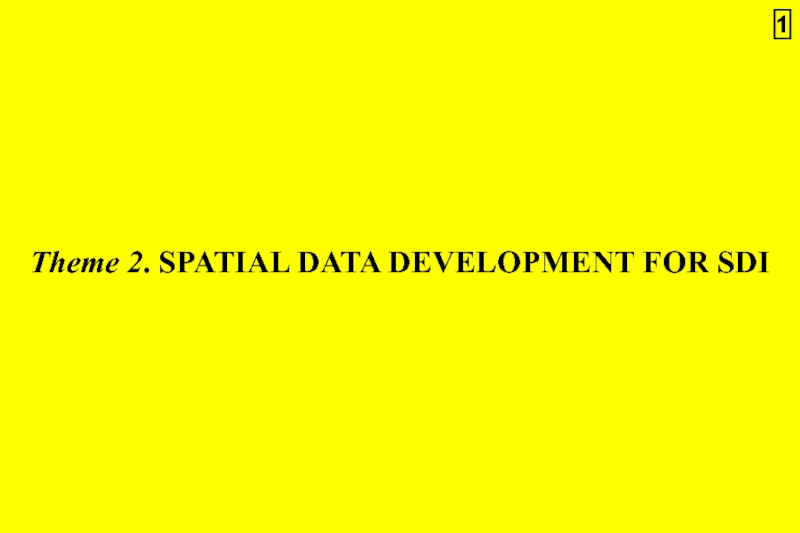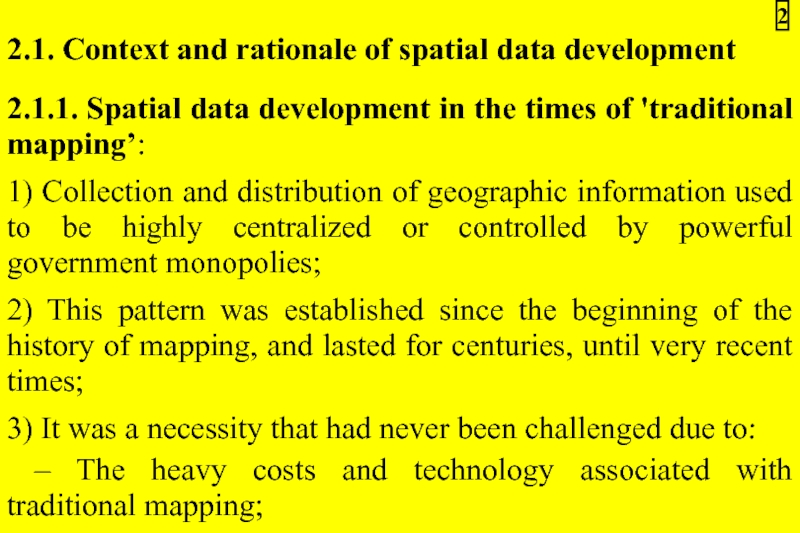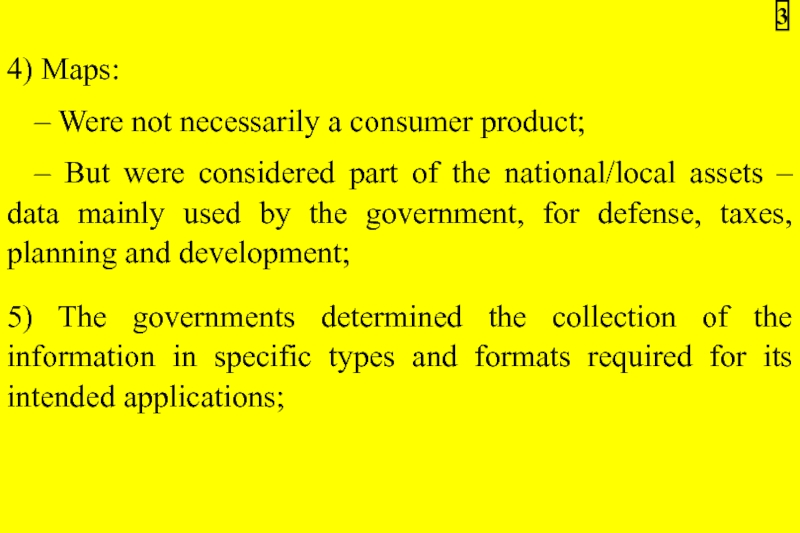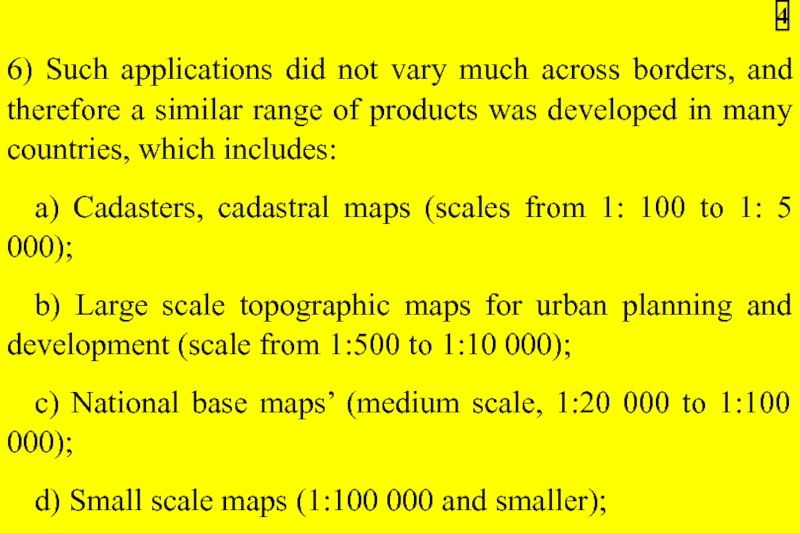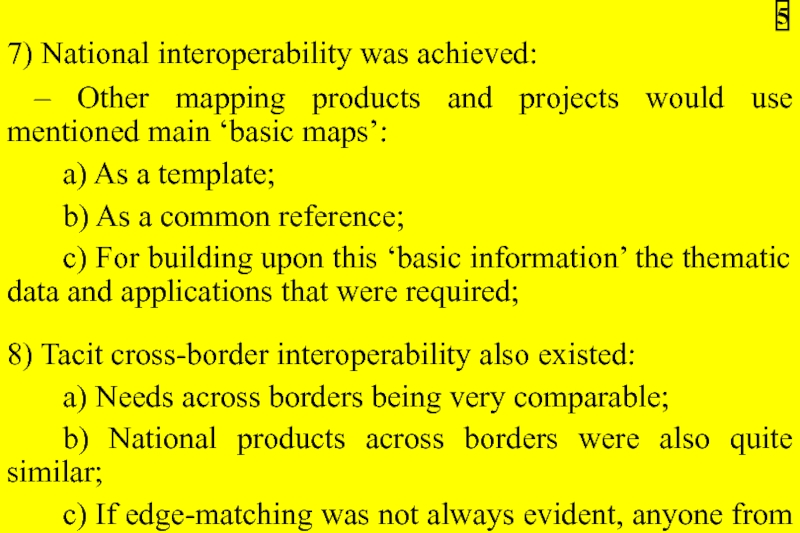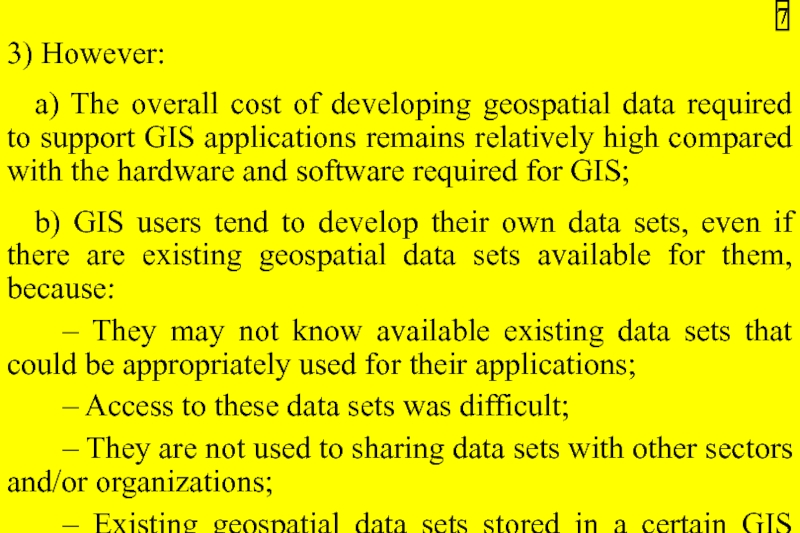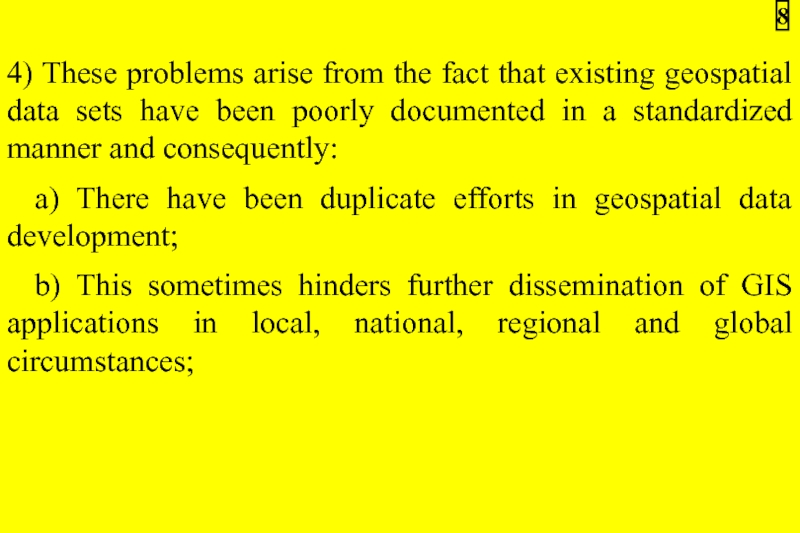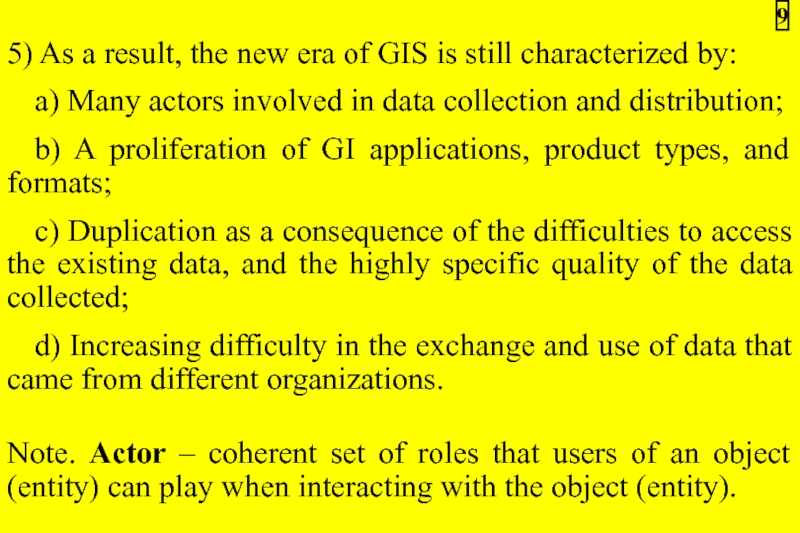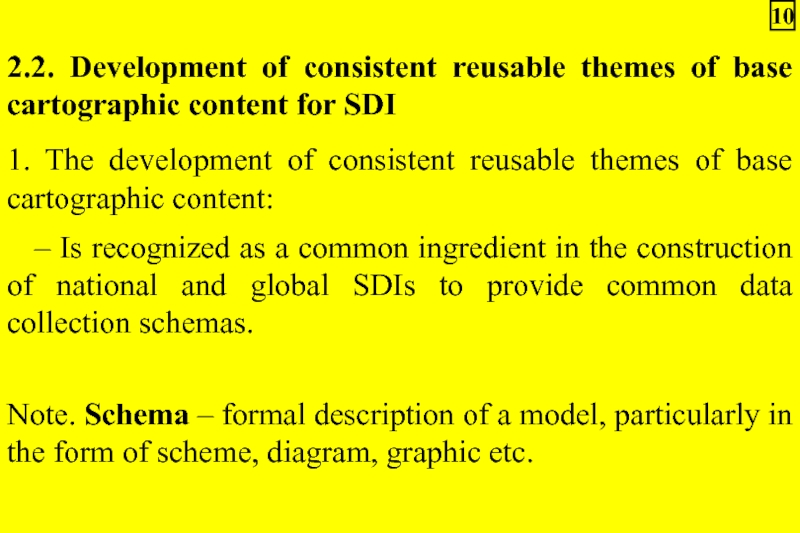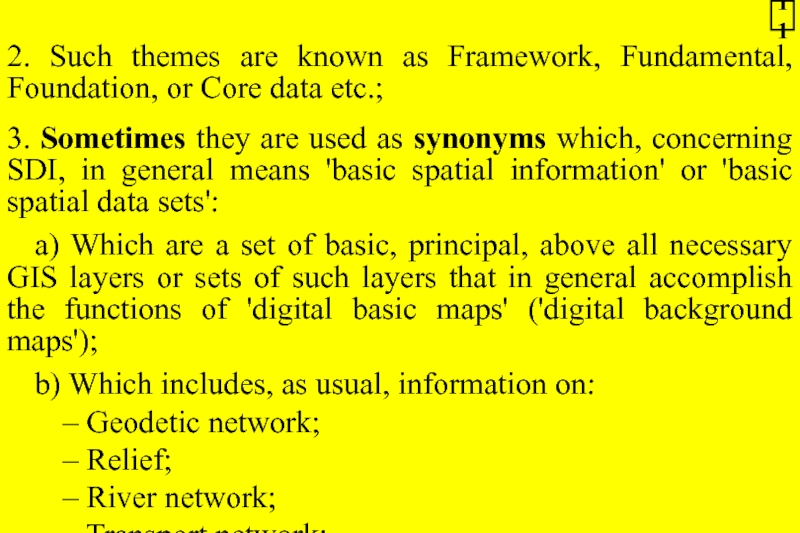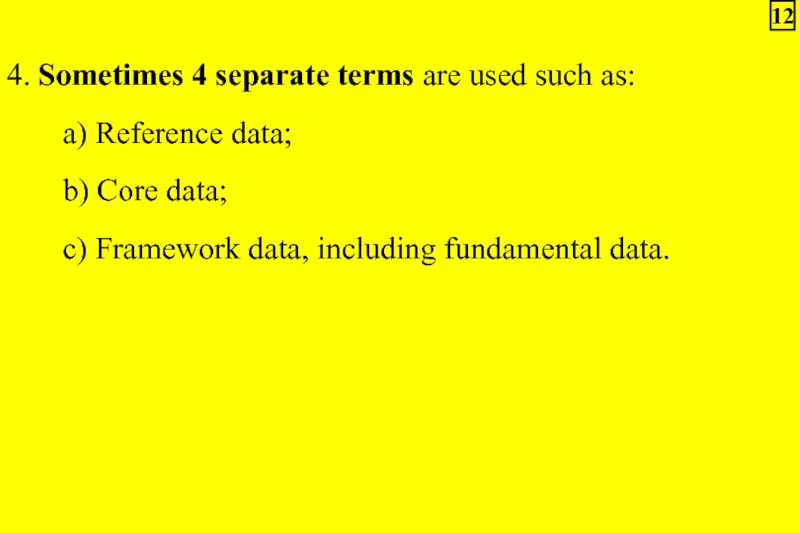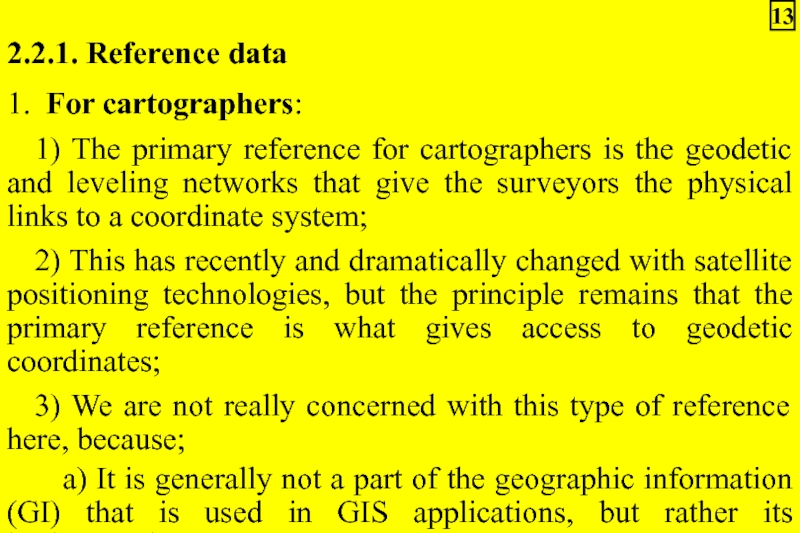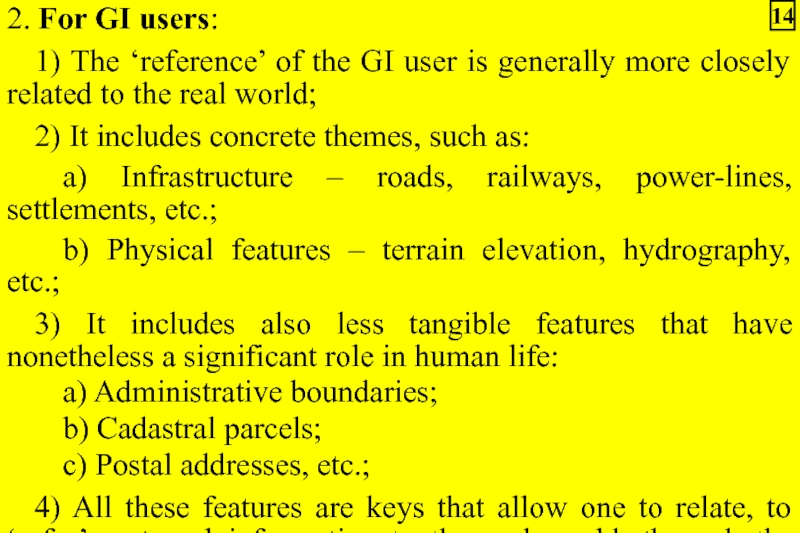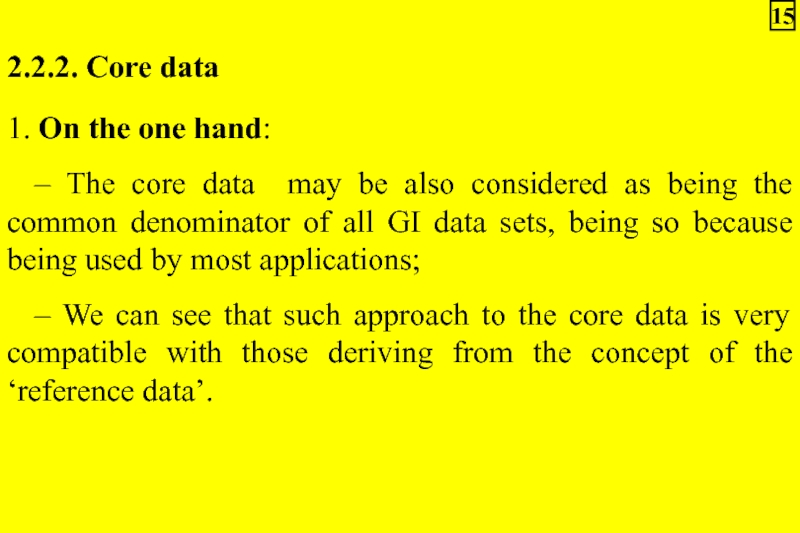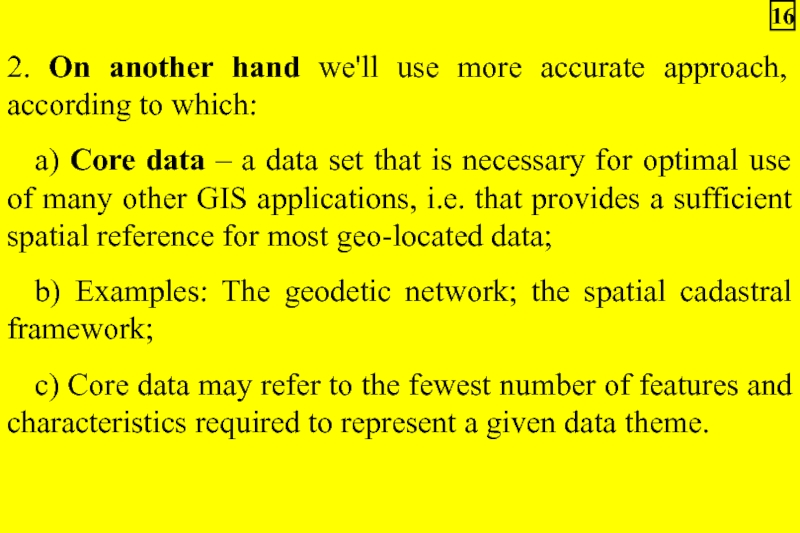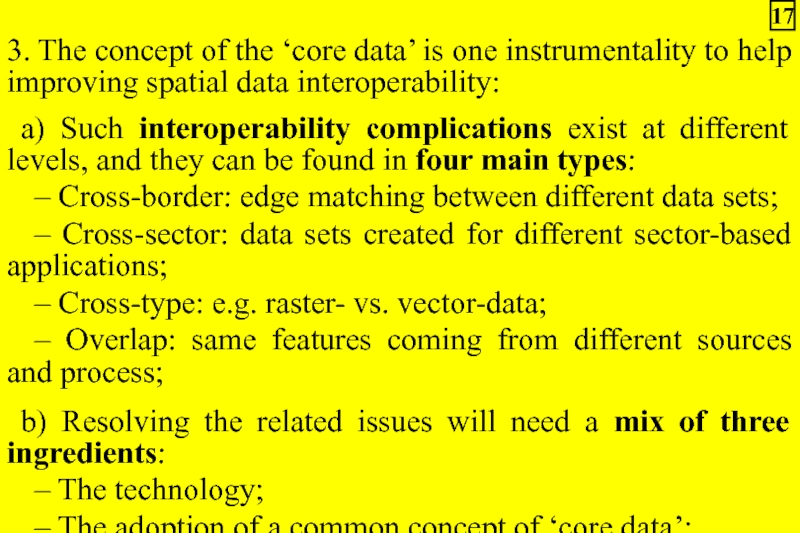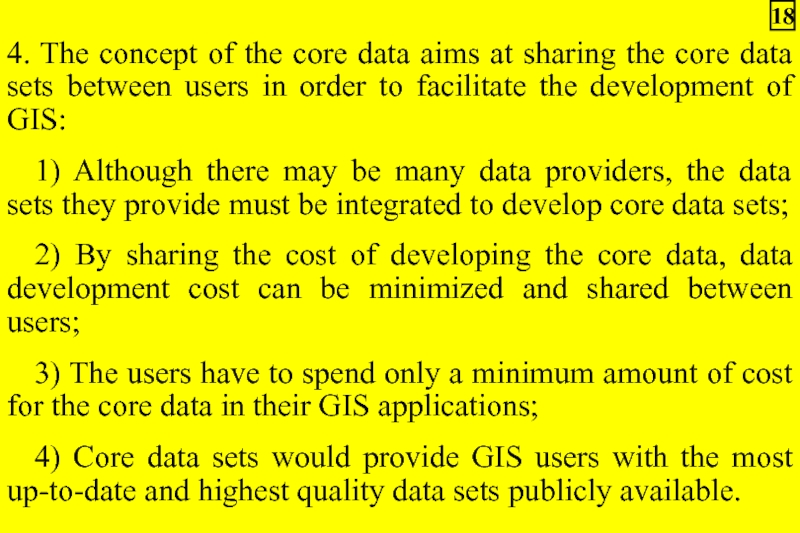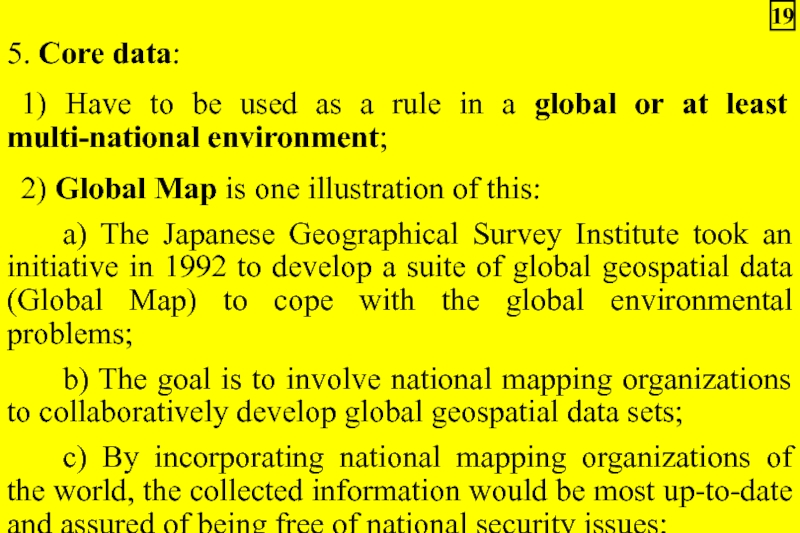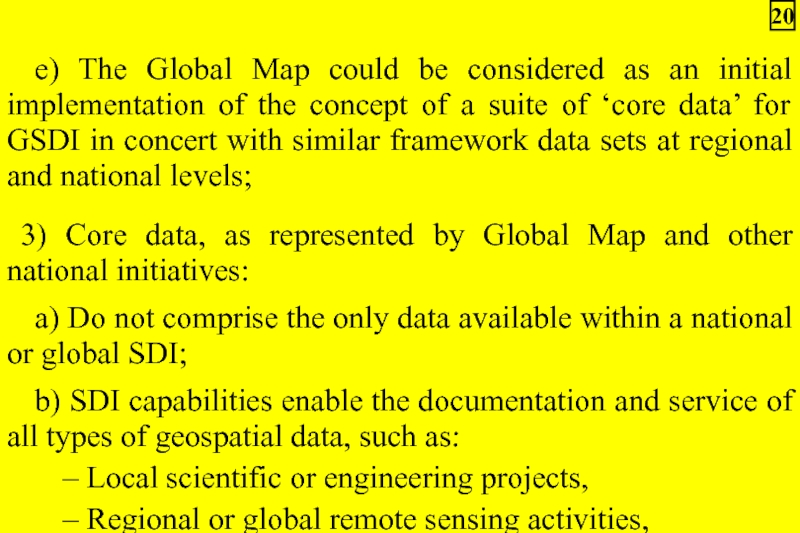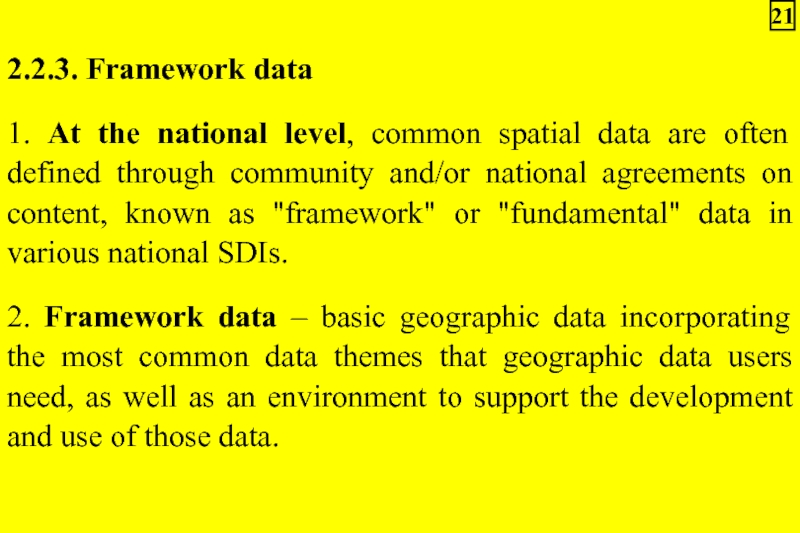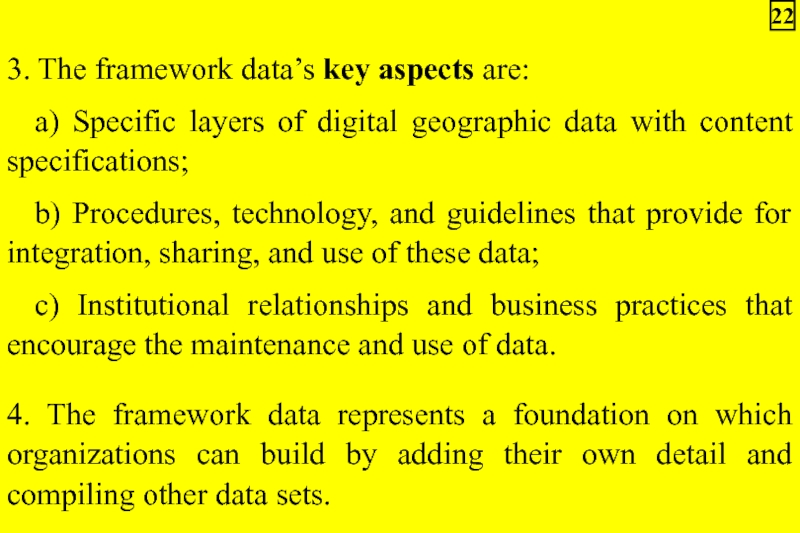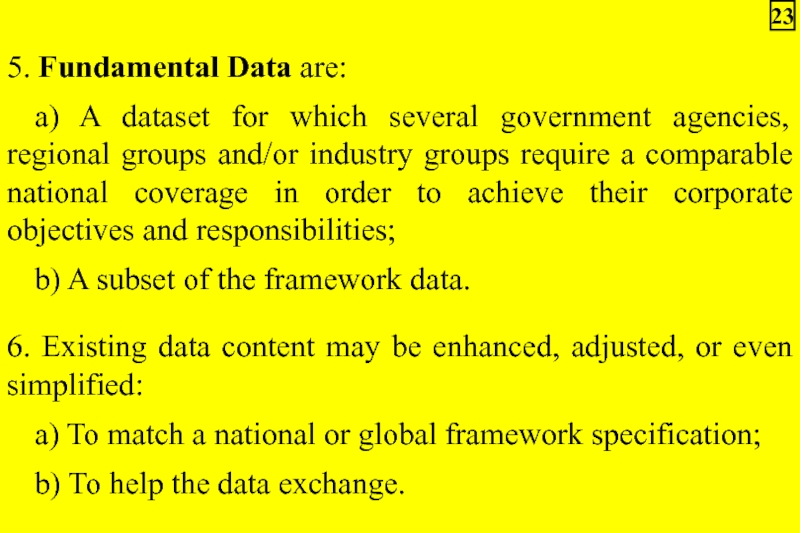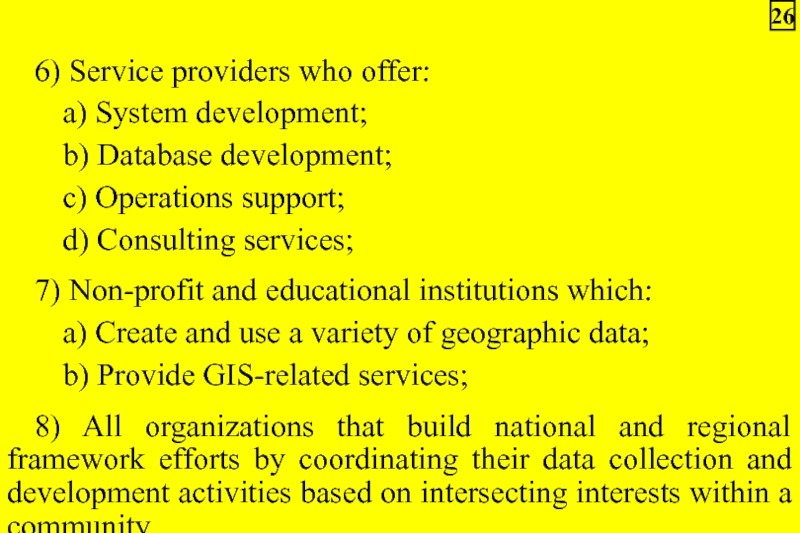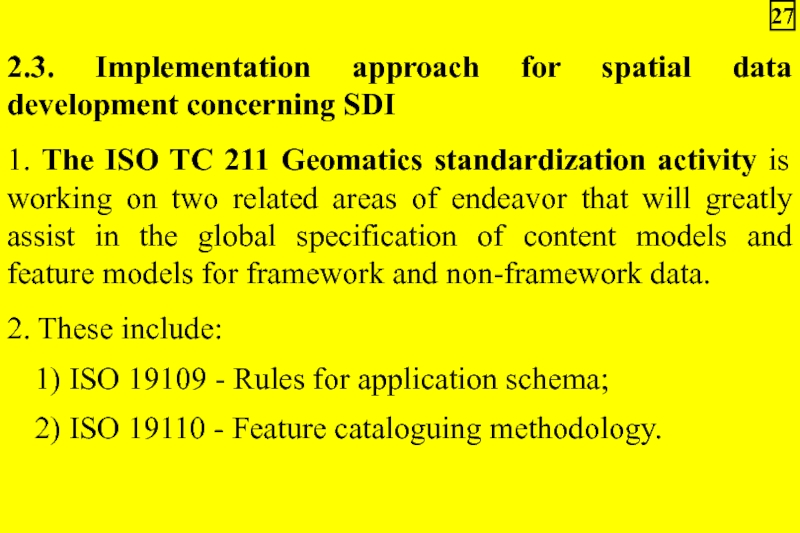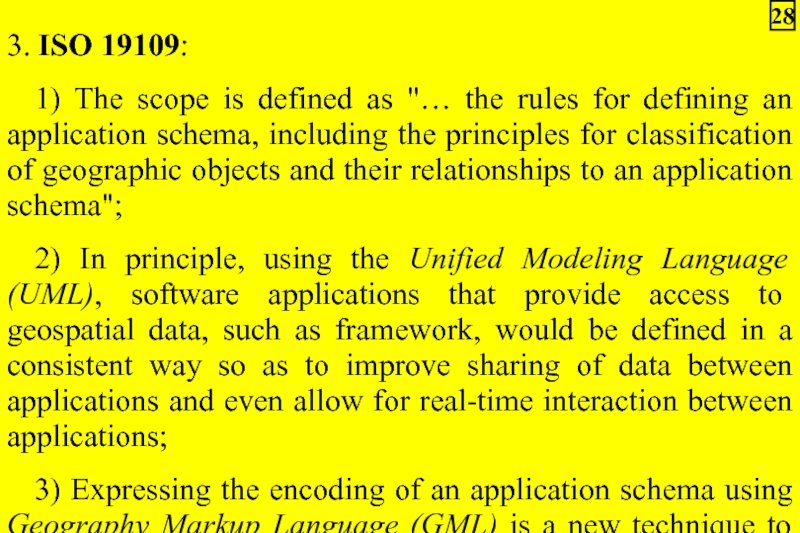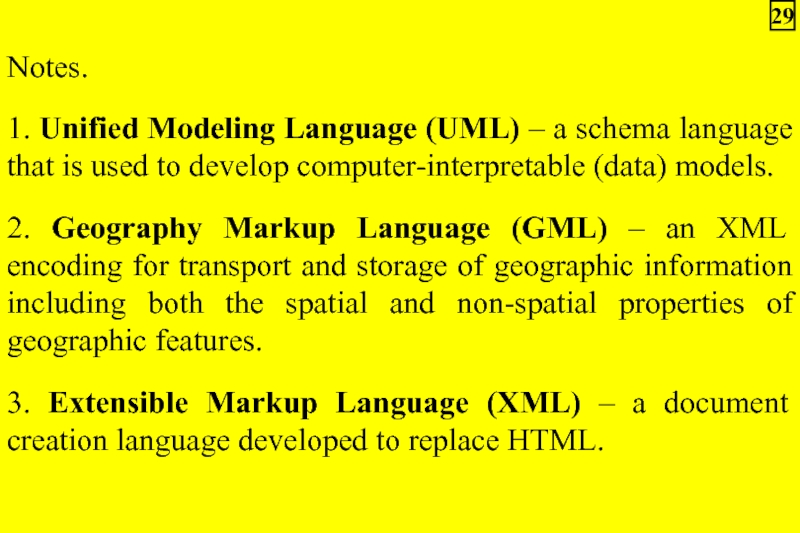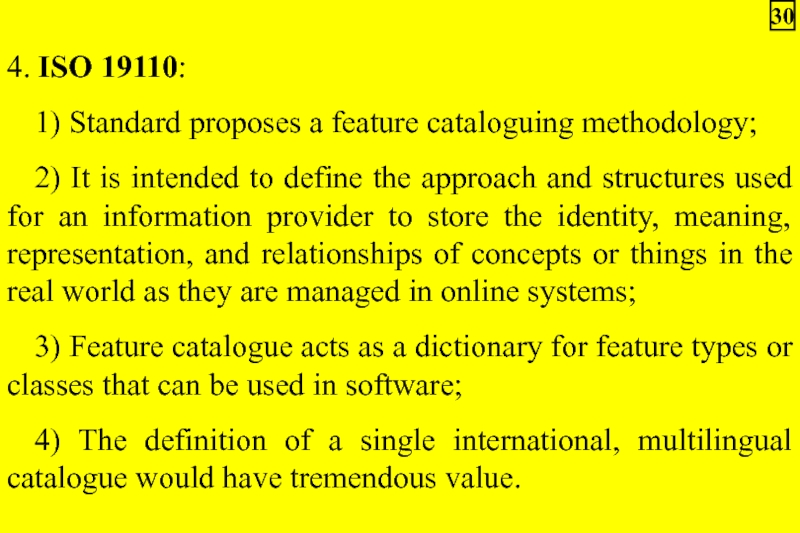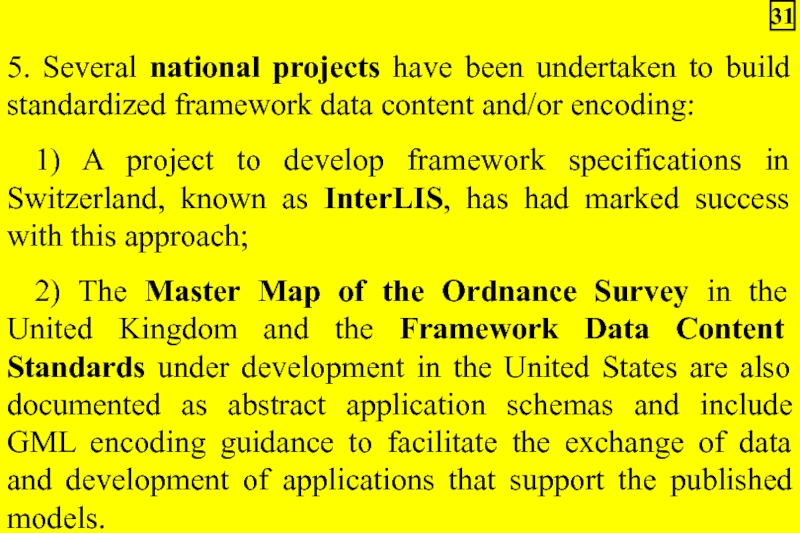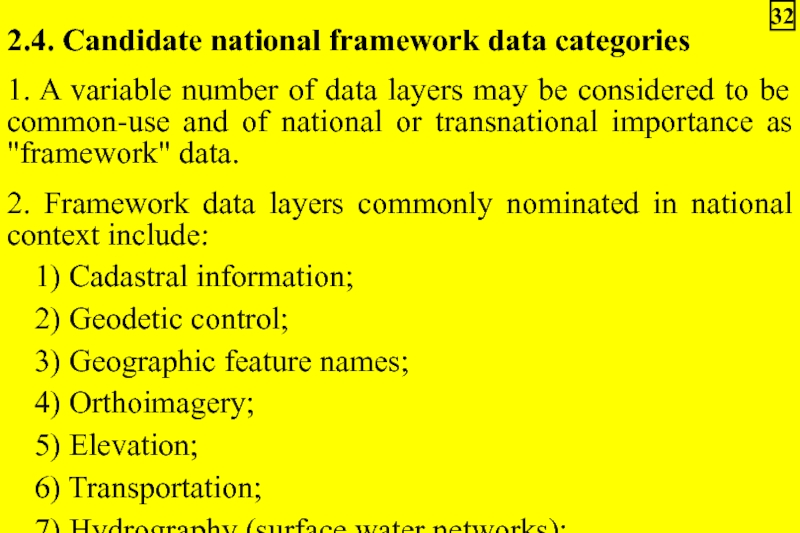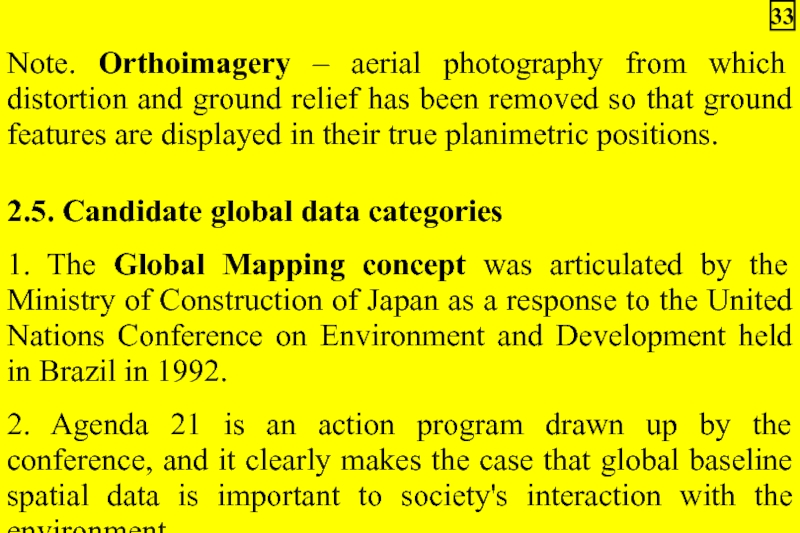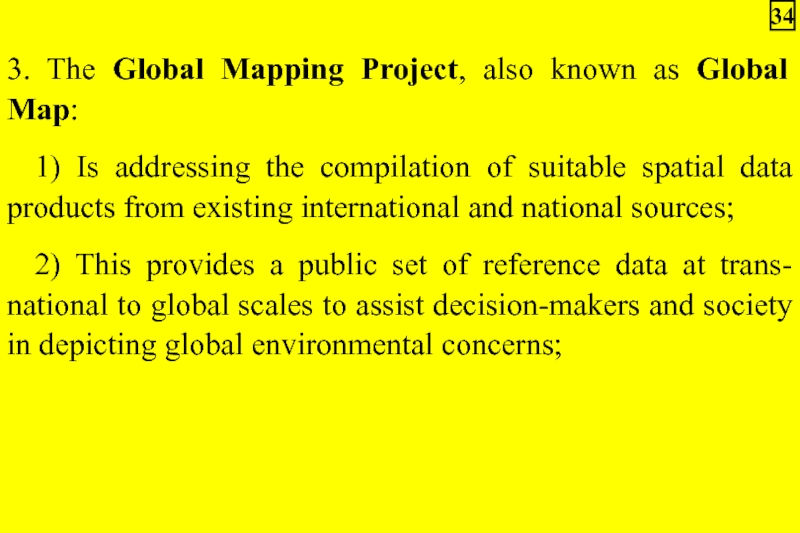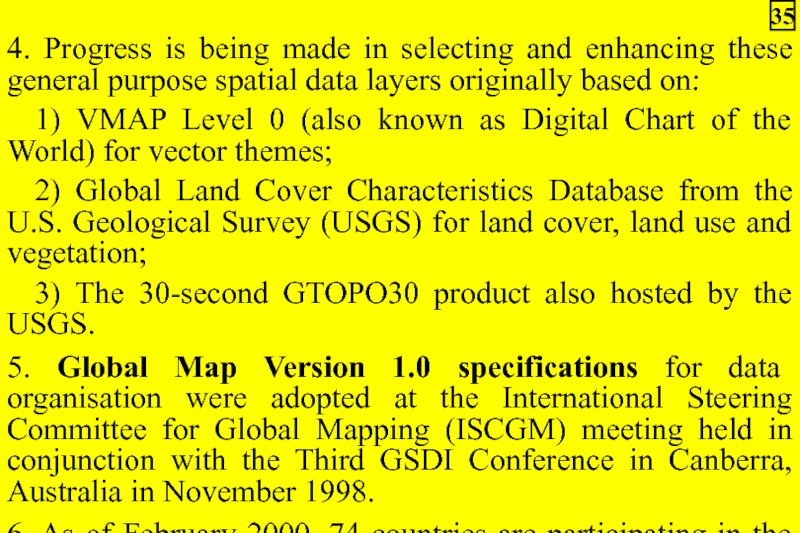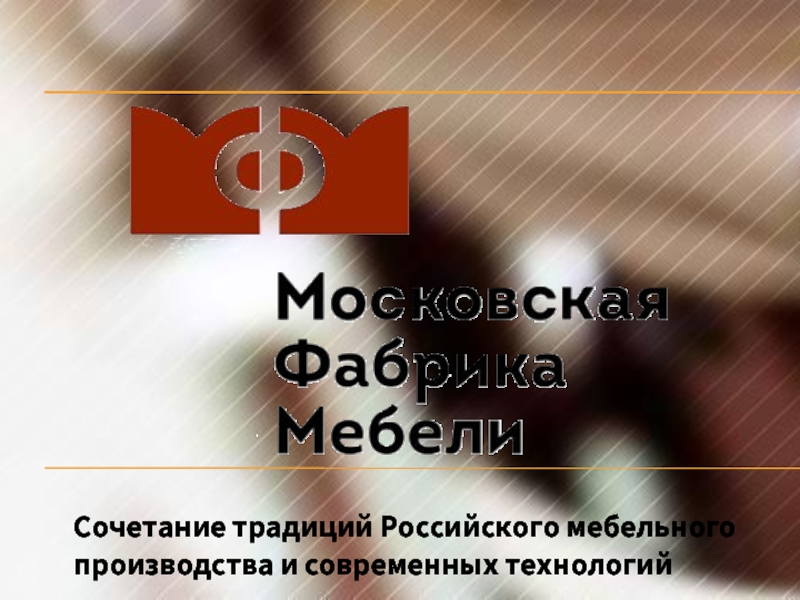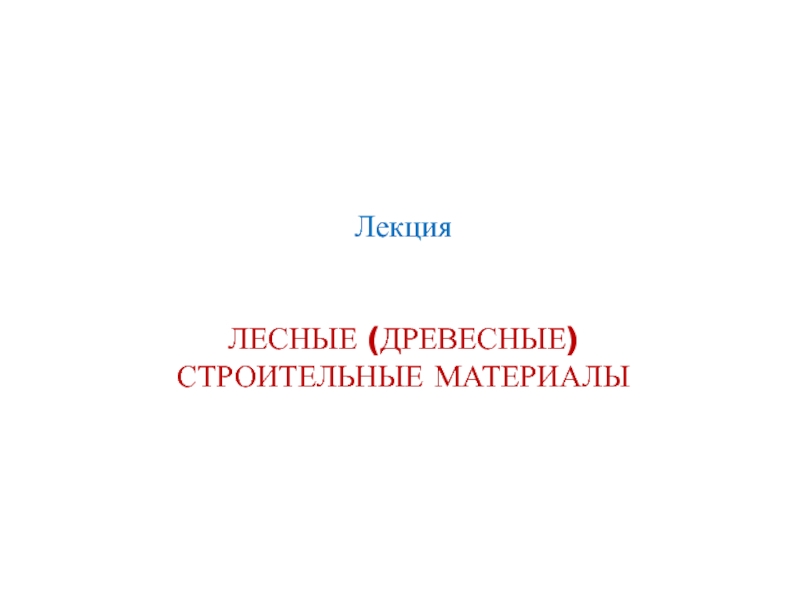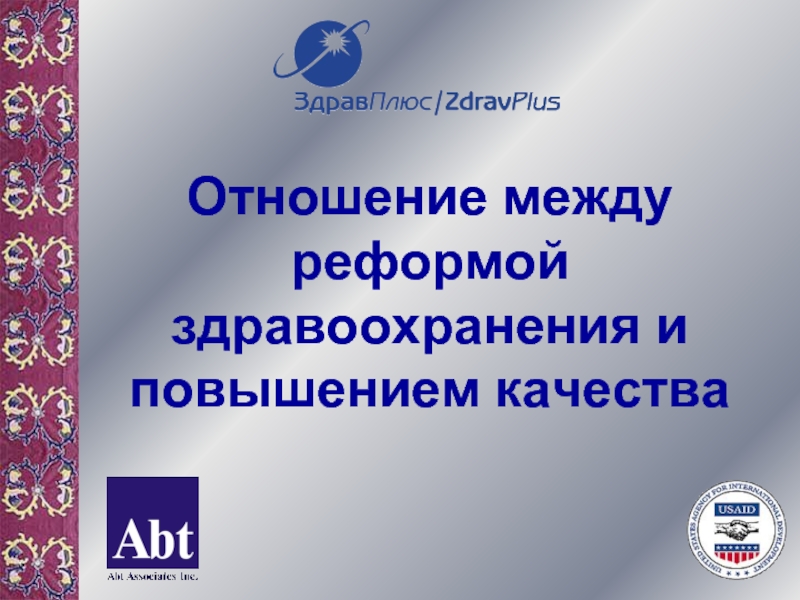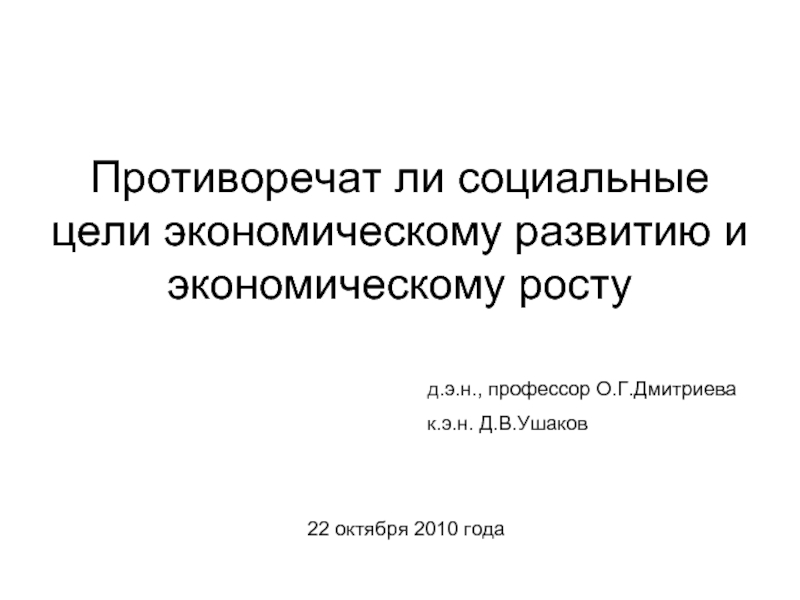- Главная
- Разное
- Дизайн
- Бизнес и предпринимательство
- Аналитика
- Образование
- Развлечения
- Красота и здоровье
- Финансы
- Государство
- Путешествия
- Спорт
- Недвижимость
- Армия
- Графика
- Культурология
- Еда и кулинария
- Лингвистика
- Английский язык
- Астрономия
- Алгебра
- Биология
- География
- Детские презентации
- Информатика
- История
- Литература
- Маркетинг
- Математика
- Медицина
- Менеджмент
- Музыка
- МХК
- Немецкий язык
- ОБЖ
- Обществознание
- Окружающий мир
- Педагогика
- Русский язык
- Технология
- Физика
- Философия
- Химия
- Шаблоны, картинки для презентаций
- Экология
- Экономика
- Юриспруденция
SDI 02 презентация
Содержание
- 1. SDI 02
- 2. 2.1. Context and rationale of spatial
- 3. 4) Maps: – Were not necessarily
- 4. 6) Such applications did not vary
- 5. 7) National interoperability was achieved: –
- 6. 2.1.2. Spatial data development in the
- 7. 3) However: a) The overall cost
- 8. 4) These problems arise from the
- 9. 5) As a result, the new
- 10. 2.2. Development of consistent reusable themes
- 11. 2. Such themes are known as
- 12. 4. Sometimes 4 separate terms are
- 13. 2.2.1. Reference data 1. For cartographers:
- 14. 2. For GI users: 1) The ‘reference’
- 15. 2.2.2. Core data 1. On the
- 16. 2. On another hand we'll use
- 17. 3. The concept of the ‘core
- 18. 4. The concept of the core
- 19. 5. Core data: 1) Have to
- 20. e) The Global Map could be
- 21. 2.2.3. Framework data 1. At the
- 22. 3. The framework data’s key aspects
- 23. 5. Fundamental Data are: a) A
- 24. 7. Leverages of framework data development:
- 25. 8. Actors in framework data development:
- 26. 6) Service providers who offer: a)
- 27. 2.3. Implementation approach for spatial data
- 28. 3. ISO 19109: 1) The
- 29. Notes. 1. Unified Modeling Language (UML)
- 30. 4. ISO 19110: 1) Standard
- 31. 5. Several national projects have been
- 32. 2.4. Candidate national framework data categories
- 33. Note. Orthoimagery – aerial photography from
- 34. 3. The Global Mapping Project, also
- 35. 4. Progress is being made in
Слайд 2
2.1. Context and rationale of spatial data development
2.1.1. Spatial data development
1) Collection and distribution of geographic information used to be highly centralized or controlled by powerful government monopolies;
2) This pattern was established since the beginning of the history of mapping, and lasted for centuries, until very recent times;
3) It was a necessity that had never been challenged due to:
– The heavy costs and technology associated with traditional mapping;
– The long time-scales of mapping projects that often extended over several decades;
2
Слайд 3
4) Maps:
– Were not necessarily a consumer product;
– But were considered
5) The governments determined the collection of the information in specific types and formats required for its intended applications;
3
Слайд 4
6) Such applications did not vary much across borders, and therefore
a) Cadasters, cadastral maps (scales from 1: 100 to 1: 5 000);
b) Large scale topographic maps for urban planning and development (scale from 1:500 to 1:10 000);
c) National base maps’ (medium scale, 1:20 000 to 1:100 000);
d) Small scale maps (1:100 000 and smaller);
4
Слайд 5
7) National interoperability was achieved:
– Other mapping products and projects would
a) As a template;
b) As a common reference;
c) For building upon this ‘basic information’ the thematic data and applications that were required;
8) Tacit cross-border interoperability also existed:
a) Needs across borders being very comparable;
b) National products across borders were also quite similar;
c) If edge-matching was not always evident, anyone from country 'A' would be able to read and use a paper map from country 'B with no special effort required.
5
Слайд 6
2.1.2. Spatial data development in the times of GIS technology:
1) The
a) Usage and type of applications is now incredibly diverse;
b) GI has become a mass-market product on its own or is found integrated in hard- and software solutions;
c) Nearly anyone can create their own maps, thanks to the use of desktop mapping, GIS, GPS surveying, satellite imagery, scanning and intelligent software;
2) GIS technology is been employed in many different areas and in newer fields of applications, as computer hardware and GIS software applications provide improved capabilities at reduced cost;
6
Слайд 7
3) However:
a) The overall cost of developing geospatial data required to
b) GIS users tend to develop their own data sets, even if there are existing geospatial data sets available for them, because:
– They may not know available existing data sets that could be appropriately used for their applications;
– Access to these data sets was difficult;
– They are not used to sharing data sets with other sectors and/or organizations;
– Existing geospatial data sets stored in a certain GIS system may not be easily exported to another system;
7
Слайд 8
4) These problems arise from the fact that existing geospatial data
a) There have been duplicate efforts in geospatial data development;
b) This sometimes hinders further dissemination of GIS applications in local, national, regional and global circumstances;
8
Слайд 9
5) As a result, the new era of GIS is still
a) Many actors involved in data collection and distribution;
b) A proliferation of GI applications, product types, and formats;
c) Duplication as a consequence of the difficulties to access the existing data, and the highly specific quality of the data collected;
d) Increasing difficulty in the exchange and use of data that came from different organizations.
Note. Actor – coherent set of roles that users of an object (entity) can play when interacting with the object (entity).
9
Слайд 10
2.2. Development of consistent reusable themes of base cartographic content for
1. The development of consistent reusable themes of base cartographic content:
– Is recognized as a common ingredient in the construction of national and global SDIs to provide common data collection schemas.
Note. Schema – formal description of a model, particularly in the form of scheme, diagram, graphic etc.
10
Слайд 11
2. Such themes are known as Framework, Fundamental, Foundation, or Core
3. Sometimes they are used as synonyms which, concerning SDI, in general means 'basic spatial information' or 'basic spatial data sets':
a) Which are a set of basic, principal, above all necessary GIS layers or sets of such layers that in general accomplish the functions of 'digital basic maps' ('digital background maps');
b) Which includes, as usual, information on:
– Geodetic network;
– Relief;
– River network;
– Transport network;
– Boundaries of administrative-territorial division and some other spatial features.
11
Слайд 12
4. Sometimes 4 separate terms are used such as:
a) Reference data;
b)
c) Framework data, including fundamental data.
12
Слайд 13
2.2.1. Reference data
1. For cartographers:
1) The primary reference for cartographers is
2) This has recently and dramatically changed with satellite positioning technologies, but the principle remains that the primary reference is what gives access to geodetic coordinates;
3) We are not really concerned with this type of reference here, because;
a) It is generally not a part of the geographic information (GI) that is used in GIS applications, but rather its background;
b) Very often it is even not visible.
13
Слайд 142. For GI users:
1) The ‘reference’ of the GI user is
2) It includes concrete themes, such as:
a) Infrastructure – roads, railways, power-lines, settlements, etc.;
b) Physical features – terrain elevation, hydrography, etc.;
3) It includes also less tangible features that have nonetheless a significant role in human life:
a) Administrative boundaries;
b) Cadastral parcels;
c) Postal addresses, etc.;
4) All these features are keys that allow one to relate, to ‘refer’, external information to the real world, through the media of its GI representation;
5) Therefore they may be considered as comprising a reference for the GI user – the ‘reference data’ in the broad sense.
14
Слайд 15
2.2.2. Core data
1. On the one hand:
– The core data may
– We can see that such approach to the core data is very compatible with those deriving from the concept of the ‘reference data’.
15
Слайд 16
2. On another hand we'll use more accurate approach, according to
a) Core data – a data set that is necessary for optimal use of many other GIS applications, i.e. that provides a sufficient spatial reference for most geo-located data;
b) Examples: The geodetic network; the spatial cadastral framework;
c) Core data may refer to the fewest number of features and characteristics required to represent a given data theme.
16
Слайд 17
3. The concept of the ‘core data’ is one instrumentality to
a) Such interoperability complications exist at different levels, and they can be found in four main types:
– Сross-border: edge matching between different data sets;
– Cross-sector: data sets created for different sector-based applications;
– Cross-type: e.g. raster- vs. vector-data;
– Overlap: same features coming from different sources and process;
b) Resolving the related issues will need a mix of three ingredients:
– The technology;
– The adoption of a common concept of ‘core data’;
– The political support that will help resourcing the necessary key implementations.
17
Слайд 18
4. The concept of the core data aims at sharing the
1) Although there may be many data providers, the data sets they provide must be integrated to develop core data sets;
2) By sharing the cost of developing the core data, data development cost can be minimized and shared between users;
3) The users have to spend only a minimum amount of cost for the core data in their GIS applications;
4) Core data sets would provide GIS users with the most up-to-date and highest quality data sets publicly available.
18
Слайд 19
5. Core data:
1) Have to be used as a rule in
2) Global Map is one illustration of this:
a) The Japanese Geographical Survey Institute took an initiative in 1992 to develop a suite of global geospatial data (Global Map) to cope with the global environmental problems;
b) The goal is to involve national mapping organizations to collaboratively develop global geospatial data sets;
c) By incorporating national mapping organizations of the world, the collected information would be most up-to-date and assured of being free of national security issues;
19
Слайд 20
e) The Global Map could be considered as an initial implementation
3) Core data, as represented by Global Map and other national initiatives:
a) Do not comprise the only data available within a national or global SDI;
b) SDI capabilities enable the documentation and service of all types of geospatial data, such as:
– Local scientific or engineering projects,
– Regional or global remote sensing activities,
– Environmental monitoring.
20
Слайд 21
2.2.3. Framework data
1. At the national level, common spatial data are
2. Framework data – basic geographic data incorporating the most common data themes that geographic data users need, as well as an environment to support the development and use of those data.
21
Слайд 22
3. The framework data’s key aspects are:
a) Specific layers of digital
b) Procedures, technology, and guidelines that provide for integration, sharing, and use of these data;
c) Institutional relationships and business practices that encourage the maintenance and use of data.
4. The framework data represents a foundation on which organizations can build by adding their own detail and compiling other data sets.
22
Слайд 23
5. Fundamental Data are:
a) A dataset for which several government agencies,
b) A subset of the framework data.
6. Existing data content may be enhanced, adjusted, or even simplified:
a) To match a national or global framework specification;
b) To help the data exchange.
23
Слайд 24
7. Leverages of framework data development:
1) Aspects of such problem:
a) Thousands
b) Yet, they still do not have the information they need to solve critical problems;
2) Framework data initiatives will greatly improve this situation by leveraging individual geographic data efforts so data can be exchanged at reasonable cost by government, commercial, and nongovernmental contributors;
3) It provides basic geographic data in a common encoding and makes them discoverable through a catalogue (See Theme 4) in which anyone can participate;
4) Using Web mapping and advanced, distributed GIS technology in the future, users can perform visual cross-jurisdictional and cross-organisational analyses and operations, and organizations can funnel their resources into applications, rather than duplicating data production efforts.
24
Слайд 25
8. Actors in framework data development:
1) Users and producers of detailed
2) Users of small-scale, limited geographic data, such as:
a) Street networks;
b) Statistical areas;
c) Administrative units;
3) Data producers who create detailed data as a product or a service;
4) Data producers who create low-resolution, small-scale, limited themes for large areas;
5) Product providers who offer software, hardware, and related systems;
25
Слайд 26
6) Service providers who offer:
a) System development;
b) Database development;
c) Operations support;
d)
7) Non-profit and educational institutions which:
a) Create and use a variety of geographic data;
b) Provide GIS-related services;
8) All organizations that build national and regional framework efforts by coordinating their data collection and development activities based on intersecting interests within a community.
26
Слайд 27
2.3. Implementation approach for spatial data development concerning SDI
1. The ISO
2. These include:
1) ISO 19109 - Rules for application schema;
2) ISO 19110 - Feature cataloguing methodology.
27
Слайд 28
3. ISO 19109:
1) The scope is defined as "… the
2) In principle, using the Unified Modeling Language (UML), software applications that provide access to geospatial data, such as framework, would be defined in a consistent way so as to improve sharing of data between applications and even allow for real-time interaction between applications;
3) Expressing the encoding of an application schema using Geography Markup Language (GML) is a new technique to formalize the packages of information being exchanged between providers and users of spatial data.
28
Слайд 29
Notes.
1. Unified Modeling Language (UML) – a schema language that is
2. Geography Markup Language (GML) – an XML encoding for transport and storage of geographic information including both the spatial and non-spatial properties of geographic features.
3. Extensible Markup Language (XML) – a document creation language developed to replace HTML.
29
Слайд 30
4. ISO 19110:
1) Standard proposes a feature cataloguing methodology;
2) It
3) Feature catalogue acts as a dictionary for feature types or classes that can be used in software;
4) The definition of a single international, multilingual catalogue would have tremendous value.
30
Слайд 31
5. Several national projects have been undertaken to build standardized framework
1) A project to develop framework specifications in Switzerland, known as InterLIS, has had marked success with this approach;
2) The Master Map of the Ordnance Survey in the United Kingdom and the Framework Data Content Standards under development in the United States are also documented as abstract application schemas and include GML encoding guidance to facilitate the exchange of data and development of applications that support the published models.
31
Слайд 32
2.4. Candidate national framework data categories
1. A variable number of data
2. Framework data layers commonly nominated in national context include:
1) Cadastral information;
2) Geodetic control;
3) Geographic feature names;
4) Orthoimagery;
5) Elevation;
6) Transportation;
7) Hydrography (surface water networks);
8) Governmental units.
32
Слайд 33
Note. Orthoimagery – aerial photography from which distortion and ground relief
2.5. Candidate global data categories
1. The Global Mapping concept was articulated by the Ministry of Construction of Japan as a response to the United Nations Conference on Environment and Development held in Brazil in 1992.
2. Agenda 21 is an action program drawn up by the conference, and it clearly makes the case that global baseline spatial data is important to society's interaction with the environment.
33
Слайд 34
3. The Global Mapping Project, also known as Global Map:
1) Is
2) This provides a public set of reference data at trans- national to global scales to assist decision-makers and society in depicting global environmental concerns;
34
Слайд 35
4. Progress is being made in selecting and enhancing these general
1) VMAP Level 0 (also known as Digital Chart of the World) for vector themes;
2) Global Land Cover Characteristics Database from the U.S. Geological Survey (USGS) for land cover, land use and vegetation;
3) The 30-second GTOPO30 product also hosted by the USGS.
5. Global Map Version 1.0 specifications for data organisation were adopted at the International Steering Committee for Global Mapping (ISCGM) meeting held in conjunction with the Third GSDI Conference in Canberra, Australia in November 1998.
6. As of February 2000, 74 countries are participating in the collection or aggregation of large-scale map products to update and package the above data sources.
35
